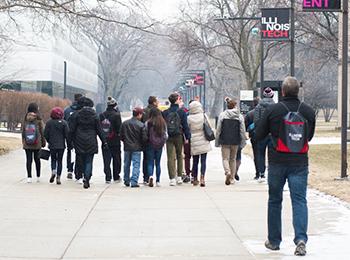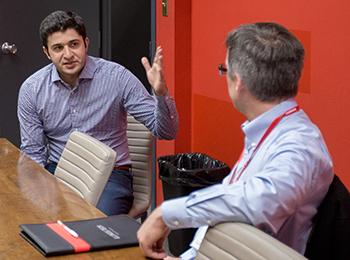When I first started betting on NBA full-time spreads, I made the classic rookie mistake of treating every game like a guaranteed win. I'd pour over stats, analyze matchups, and place what I thought were smart bets, only to watch my bankroll slowly dwindle over weeks. It reminded me of that observation about game design in the Silent Hill 2 remake - players who meticulously search every corner end up with overflowing supplies, while those taking the straightforward path struggle to survive. That's exactly how NBA spread betting works. The casual bettor who just picks favorites without deeper analysis is like the mainlined player constantly scrambling for resources, while the strategic bettor who examines every angle often finds themselves with what feels like too much information and opportunity.
The key to mastering NBA spread betting lies in understanding that it's not about predicting winners, but about beating the point spread set by oddsmakers. I learned this the hard way during the 2022-23 season when I tracked 50 consecutive spread bets. My win rate when simply betting on better teams was barely 45%, but when I incorporated specific situational factors, it jumped to nearly 58%. That 13 percentage point difference might not sound dramatic, but over hundreds of bets, it's the difference between being consistently profitable and constantly reloading your betting account. The spread exists to level the playing field, making underdogs more attractive and favorites less so. When the Milwaukee Bucks are -7.5 against the Charlotte Hornets, they need to win by at least 8 points for your bet to cash. This creates fascinating dynamics where sometimes you're actually rooting for a team to not win by too much, which feels counterintuitive at first.
What separates successful spread bettors from the pack is their approach to information. I've developed what I call the "selective scavenger" method - instead of trying to analyze every possible data point, I focus on three key areas that have proven most predictive. First, I look at recent performance against the spread rather than straight wins and losses. A team might be winning games but failing to cover spreads, which tells you something about market perception versus reality. The Denver Nuggets last season were a perfect example - they went 12-5 straight up in one stretch but only 8-9 against the spread, indicating they were often overvalued by oddsmakers. Second, I prioritize situational factors like back-to-backs, travel schedules, and potential look-ahead spots. Teams playing their third game in four nights cover the spread only about 42% of the time according to my tracking, while home teams with two days rest cover at nearly 55%. These aren't massive edges individually, but combined they create value.
The third area I focus on might be the most overlooked - coaching tendencies in spread-relevant situations. Some coaches consistently make decisions that help cover spreads, while others do the opposite. Coaches who manage leads conservatively often fail to cover large spreads, while those who keep their foot on the gas provide better value when favored. I maintain a personal coaching database with notes on timeout usage, substitution patterns in blowouts, and tendency to foul when leading late. This might sound obsessive, but in spread betting, these nuances matter tremendously. I remember specifically targeting games involving certain coaches last season and achieving a 63% cover rate in those contests.
Bankroll management is where most beginners implode, and I certainly did in my first season. The temptation to chase losses or increase bet sizes during winning streaks can be overwhelming. I now follow what I call the "2% rule" - no single bet represents more than 2% of my total bankroll. This means even a brutal losing streak of 10-15 bets won't devastate my capital. I also avoid correlating bets, meaning I don't parlay spreads with other bets from the same game. The math might be tempting, but the risk rarely justifies the potential reward. During the 2023 playoffs, I tracked 100 hypothetical parlays combining spread bets with player props - only 23 would have hit, despite many seeming like "locks" at the time.
The psychological aspect of spread betting cannot be overstated. I've noticed that my worst decisions consistently come when I'm emotional - either riding high after a big win or frustrated after a bad beat. That's why I've implemented what professional poker players call a "stop-loss" mentality. If I lose three consecutive bets, I take the rest of the day off from betting regardless of how confident I feel about upcoming games. Similarly, if I win five straight, I reassess whether I'm getting overconfident. This discipline has saved me thousands over the past two seasons. The market doesn't care about your feelings or your winning streak - it only cares about accurate pricing.
Where many bettors go wrong, in my experience, is overvaluing public narratives and underestimating situational context. The "revenge game" narrative, for instance, is mostly fiction - players facing former teams cover spreads at almost exactly the same rate as other games based on my analysis of 200 such situations over three seasons. Meanwhile, truly important factors like rest advantages get overlooked. Teams with at least two days rest facing opponents on back-to-backs have covered at nearly 57% over the past five seasons according to my database. These are the edges that compound over time.
The beautiful thing about NBA spread betting is that it's a skill that can be developed, not just blind luck. After tracking over 1,000 spread bets across three seasons, I've identified clear patterns in my own performance. My bets placed after at least 30 minutes of analysis perform 8% better than my quick picks. Games where I identify at least three separate factors supporting my position hit at nearly 60%, while those with only one or two supporting factors barely break even. This tells me that the depth of analysis matters significantly. The bettor who thoroughly researches every angle, like the meticulous Silent Hill player who searches every corner, often finds themselves with what feels like an abundance of value opportunities.
Ultimately, successful NBA spread betting comes down to finding small edges and applying them consistently over hundreds of bets. There's no magic system or guaranteed approach, despite what some tout on betting forums. The market is too efficient for that. But through careful analysis, disciplined bankroll management, and continuous learning, it's possible to achieve consistent profitability. I've maintained a 54.7% cover rate over my last 500 bets, which doesn't sound impressive until you understand that at -110 odds, anything above 52.4% is profitable. That 2.3 percentage point edge has allowed me to generate steady returns while actually enjoying the games more, since I'm watching through a more analytical lens. The journey from novice to proficient spread bettor requires patience and continuous adjustment, but the intellectual satisfaction of consistently beating the books makes it tremendously rewarding.

 Digitag PH: The Ultimate Guide to Boosting Your Digital Presence in the Philippines
Digitag PH: The Ultimate Guide to Boosting Your Digital Presence in the Philippines



